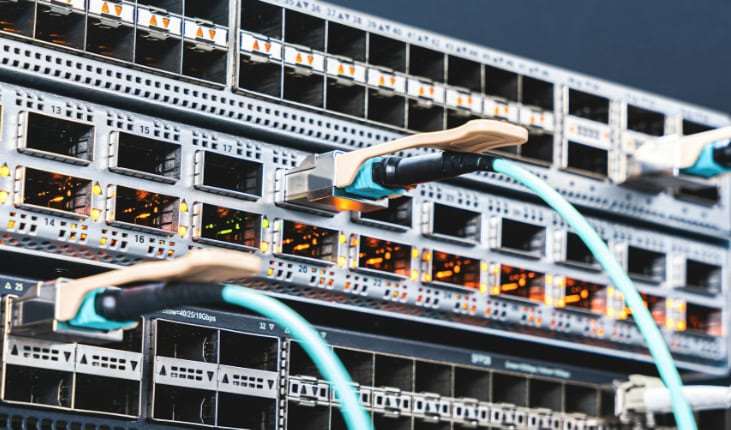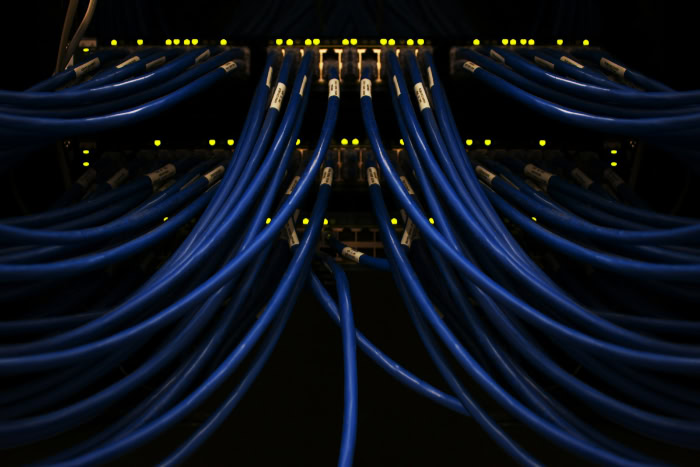Bridge vs. Switch: Which One Fits Your Needs?

Think about modern networks: offices buzzing with activity, data traveling between devices in milliseconds, and the seamless connection we often take for granted. Behind this connectivity are devices that quietly direct and manage every bit of information.
Bridges and switches may sound like technical jargon, but recognizing what sets them apart can make a real difference for anyone designing, maintaining, or troubleshooting a network.
Core Concepts and Definitions
To truly appreciate how modern networks operate, it helps to first grasp the fundamental building blocks that make data transmission possible. Bridges and switches both serve vital roles in connecting devices and shaping how information flows, yet each has its own distinct purpose, history, and capabilities within network infrastructure.
Bridges
Bridges are devices designed to connect and segment different parts of a local area network (LAN). Their primary function involves examining data frames and making decisions based on MAC (Media Access Control) addresses.
By filtering traffic in this way, a bridge helps prevent unnecessary data from spreading across the entire network, which can improve efficiency in small to moderately sized environments.
Introduced in the early days of computer networking, bridges addressed a pressing need for better network segmentation. As networks grew, single broadcast domains became problematic, often leading to congestion and performance issues.
Early bridges solved this by dividing networks into smaller, more manageable sections. Each bridge could analyze incoming frames, decide whether to forward them, and ultimately reduce traffic that did not need to travel beyond a particular segment.
While bridges are less common in new installations today, their legacy remains. Many modern concepts, such as selective forwarding and network isolation, are rooted in the early functions that bridges provided.
Switches
Switches emerged as an evolution of bridging technology, designed to address the need for faster, more scalable, and highly efficient network management. Unlike bridges, which typically connect only two LAN segments, switches offer multiple ports and can interconnect dozens of devices at once.
Each port on a switch operates independently, forwarding data at high speed thanks to specialized hardware components.
Modern switches go far beyond simple traffic forwarding. They support advanced features that are crucial in today’s networks, including Virtual LANs (VLANs) for logical segmentation, Quality of Service (QoS) for prioritizing critical data, and Access Control Lists (ACLs) for enhanced security.
The use of dedicated switching hardware allows switches to process data frames almost instantaneously, reducing delays and increasing overall network speed.
Switches have become the standard network connectivity device in most organizations, powering everything from small office networks to massive data centers. Their ability to scale, segment, and secure network traffic makes them essential for supporting modern business operations and digital collaboration.
Technical Operational Differences

A closer look at how bridges and switches function reveals important distinctions in their operation within a network. These differences affect everything from traffic management to collision handling, influencing network performance and efficiency in practical ways.
OSI Layer Functionality
Bridges operate primarily at Layer 2 of the OSI model, also known as the data link layer. This means they use MAC addresses to make decisions about forwarding or filtering data frames, enabling communication between different segments of a LAN without involving higher-level protocols.
Switches typically function at Layer 2 as well, but many managed switches extend their capabilities to Layer 3, the network layer. At this level, switches can perform routing functions by handling IP addresses in addition to MAC addresses.
This allows them to manage traffic between different subnets, providing more granular control over how data moves throughout larger or more complex networks.
Traffic Handling
Traffic handling methods differ significantly between bridges and switches. Bridges commonly use a store-and-forward approach, which means that the device receives the entire data frame before processing and forwarding it.
This method helps ensure error checking but can introduce slight delays.
Switches often utilize cut-through switching, which begins forwarding the frame as soon as the destination address is read, without waiting for the entire frame to arrive. This technique reduces latency and speeds up communication, making switches more suitable for environments where fast data transfer is essential.
Collision Domains
Collision domains define areas within a network where data packets can collide with one another when sent simultaneously. Bridges create a single collision domain for the connected segments, meaning all devices linked by a bridge share the same space where collisions might occur.
Switches, on the other hand, provide a separate collision domain for each port. This design isolates traffic between devices connected to different ports, effectively preventing collisions and allowing multiple communications to happen concurrently.
The result is a more efficient network that supports higher throughput and reduced data transmission conflicts.
Performance and Scalability

Performance and scalability often determine how well a network device will serve in real-world scenarios. Bridges and switches each offer unique traits in terms of speed, network size, and efficient use of bandwidth.
A closer examination clarifies how they meet the growing demands of modern connectivity.
Speed and Latency
Software-based bridging typically relies on the device’s general-purpose processor to analyze and forward frames. This approach is functional for modest traffic loads but can introduce noticeable delays as traffic increases.
Frame processing, error checking, and forwarding decisions all occur in software, which naturally imposes limitations on throughput and latency.
Switches handle data more efficiently through hardware-accelerated design. Specialized chips, often called Application-Specific Integrated Circuits (ASICs), rapidly process each data frame.
This hardware approach dramatically reduces the delay between receiving and forwarding frames, enabling networks to operate at much higher speeds. The benefits are most apparent in environments where low latency and high throughput are essential, such as business networks and data centers.
Scalability Limits
Bridges were initially designed to connect two network segments, which means most traditional bridges support only two ports. Scaling up with bridges introduces complexity and the risk of broadcast storms, where excessive broadcast traffic can overwhelm a network, reducing performance and reliability.
Switches excel in scalability, easily supporting dozens of ports in a single device. This allows for the connection of many devices without compromising network stability.
Switches also offer features like VLAN segmentation, which create isolated sub-networks within the same physical device. VLANs help manage broadcast domains and support large-scale network architectures by separating traffic for different departments or purposes while maintaining efficient connectivity.
Bandwidth Efficiency
Bridges commonly work in half-duplex mode, meaning data can flow in only one direction at a time on each segment. This limitation can lead to congestion and collisions, especially as network usage grows.
Switches employ full-duplex communication, allowing data to be sent and received simultaneously on each port. The result is significantly improved bandwidth utilization, reduced collisions, and much better overall network performance.
Full-duplex capability is vital in environments with high data demand, supporting smoother video calls, faster downloads, and real-time collaboration.
Use Cases and Practical Applications

Selecting the appropriate device for a network often depends on specific technical requirements and operational goals. Bridges and switches each offer clear advantages in certain situations, which makes it helpful to understand their most effective applications in real-world settings.
When to Use Bridges
Bridges find their place in legacy networks or scenarios where minimal segmentation is needed. Many older networks still operate with devices that predate fast Ethernet or complex switching infrastructure, making bridges a practical solution for extending network reach without extensive upgrades.
For environments with limited devices or low traffic levels, a bridge can neatly divide a network into manageable sections and help contain unnecessary broadcast traffic.
Additionally, bridges can offer value in small office or specialized setups where only a couple of segments require isolation and the budget does not accommodate a more sophisticated switch. Their simplicity, reliability, and ease of installation make them an ideal option for maintaining essential separation in traditional or non-critical network arrangements.
Switch-Centric Scenarios
Modern networks with high device density rely heavily on switches. Offices, schools, and data centers benefit from the multi-port capabilities and rapid packet handling that switches provide.
In such environments, devices must communicate quickly and efficiently; switches are built to handle this demand without causing delays or bottlenecks.
Switches shine in settings where department-based traffic needs to remain isolated, yet all users share the same physical infrastructure. Virtual LANs, or VLANs, segment users or devices for both security and performance purposes.
Using VLANs on a switch, an administrator can separate employee computers from guest devices or production systems from development environments, all while using a single switch. This flexibility not only supports organizational security but also optimizes bandwidth and helps streamline network administration.
Overall, switches have become the foundation of most contemporary networks due to their speed, scalability, and advanced traffic management capabilities. Their adaptability suits everything from small offices to the most complex campus or enterprise networks.
Deployment Considerations

Choosing between bridges and switches involves more than just technical specifications. Cost, complexity, and overall suitability for current and future needs also play a major role.
Each device brings a unique set of advantages and tradeoffs that influence how networks are planned, deployed, and maintained.
Cost and Complexity
Bridges are valued for their simplicity and affordability. Often considered plug-and-play, a typical bridge does not require extensive configuration or specialized knowledge to install.
This low barrier to entry makes bridges attractive for small networks, legacy systems, or environments where minimizing upfront expenses is a priority. Maintenance is also straightforward, as fewer advanced settings mean less opportunity for misconfiguration.
Switches, on the other hand, usually come with a higher price tag, particularly as capacity and feature sets increase. Investing in a switch may require more substantial initial funding, especially for enterprise-grade or fully managed models.
However, the return on investment becomes clear over time as switches enable greater flexibility, support more devices, and handle higher traffic volumes. The added features found in switches also support long-term scalability and improved overall network performance, which can justify the cost in dynamic or growing environments.
Limitations and Tradeoffs
Bridges do not offer the advanced features that modern networks often demand. Limitations include the lack of support for VLANs or advanced security controls, making them less suitable for organizations that require segmenting traffic or enforcing strict access policies.
Additionally, as the network grows, bridges can struggle to keep pace with bandwidth and performance expectations, especially when compared to more capable devices.
Switches introduce their own set of considerations. With greater versatility comes added complexity. Setting up and maintaining managed switches often requires a higher level of networking knowledge, and incorrect configurations can inadvertently introduce vulnerabilities or performance bottlenecks.
Furthermore, switches, especially those with many ports and advanced functionality, may face unique security challenges. Misconfigured ACLs or VLANs, for example, can lead to data leaks or exposure of sensitive segments.
Careful planning and ongoing management are essential to fully reap the benefits of modern switching technologies while avoiding potential pitfalls.
Conclusion
Bridges and switches serve the vital function of connecting network segments and directing data traffic, yet their differences set them apart in both capability and suitability for modern needs. Bridges, with their straightforward design and low cost, continue to hold value in legacy networks and low-traffic environments where simplicity is more important than advanced features.
However, switches have become the go-to solution for most businesses and organizations due to their speed, advanced capabilities, scalability, and support for features like VLANs and full-duplex communication.
Switches handle the demands of today’s high-density networks, offering both superior performance and the flexibility to segment and secure traffic as needed. Choosing the right device comes down to aligning your selection with network size, performance requirements, and long-term goals.
By matching the device to specific needs, organizations can ensure reliable, efficient, and secure network operations, now and into the future.


